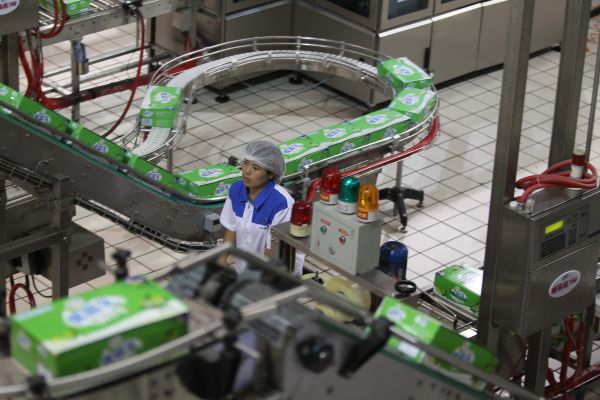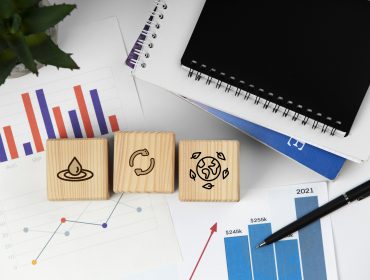
East Asia’s SMEs gearing up to challenges of new economy
July 8th, 2017 – Small and medium-sized enterprises (SMEs) have played a vital role in East Asia’s development. At first, they were traditional handicraft industries, or cottage industries that were mostly found in rural areas. As countries started industrialising, many SMEs also set up shop in urban areas. Some grew rapidly to become “large” industries or even multinationals.
To continue to survive, SMEs everywhere will have to adapt and adjust by developing their niche role in the economy.
Indeed, SMEs in more developed East Asian economies have continued to take advantage of technological progress to grow and become the mainstay of the manufacturing sector. They have to be entrepreneurial and highly adaptable. In the meantime, many old large industries have declined or even become extinct like “industrial dinosaurs” because of their failure to adapt, or just due to their technological obsolescence.
In the early days of the industrial revolution, many SMEs had a hard time surviving because they were too backward or too small in size to take advantage of technological progress.
Today, the tables have turned. Modern technological progress is more “neutral to scale”, in the sense that it can also benefit smaller firms, particularly those that are also entrepreneurial and innovation-driven.
In fact, most start-ups today begin very small, and then grow big. Such is the case for many high-tech types of modern SMEs.
WHAT DRIVES GROWTH NOW?
In the developed East Asian economies, growth is now mainly driven by increases in domestic consumption, with the service activities rapidly expanding at the expense of manufacturing.
In fact, most SMEs in Hong Kong, South Korea and Singapore are mainly service-oriented.
For some very high-tech or highly innovative industries, it has become difficult to pinpoint if their core activities belong mainly to service or manufacturing. In fact, some biotechnology SMEs carry out both research and development activities and production in the same premises. The line between service and manufacturing is getting blurred. This trend is set to continue.
In future, with growing robotisation, rapid digitisation and increasing application of artificial intelligence (AI) to production, the conventional notion of SMEs as simply defined by size, employment, capitalisation or sales will become less relevant.
Their impact on modern society will also be different, particularly for their role in poverty alleviation and income distribution.
SME GROWTH IN EAST ASIA
In East Asia, particularly Hong Kong, Taiwan and South Korea, SMEs were at the forefront of the early industrialisation drive, with numerous SMEs set up by private entrepreneurs to produce a wide range of consumer goods for the export markets in the West.
For Hong Kong, SMEs formed the backbone of its industrialisation. Hong Kong’s best-known billionaire tycoon, Mr Li Ka Shing, started off in the 1950s as an SME producing plastic flowers.
For Taiwan, its manufactured exports were basically driven by SMEs. Most semiconductor manufacturers in Taiwan are SMEs. For instance, Ace Computer started off producing peripheral computer components, only later developing into an internationally well-known laptop computer maker.
Similarly for South Korea, its export drive was typically mounted by SMEs producing a wide range of light industrial products. Subsequently, some SMEs had also successfully grown to become big industrial conglomerates, or chaebols – for example, Samsung, Hyundai and LG.
Many East Asian SMEs were truly dynamic in the sense that they were mostly efficient and competitive as well as export-oriented. They operated largely in accordance with market forces (except for the chaebols in South Korea), with minimal government subsidies. They had played a crucial role in the industrial take-off of these East Asian economies.
This is in sharp contrast to the early industrialisation efforts of China and also India, which depended principally on government initiatives or government-led industrialisation based on state-owned enterprises – for example, China’s First Five-Year Plan (1952-57) and India’s First Five-Year Plan (1951-56).
It is also different from the SME development experience in the Asean region. In the more developed Asean countries like Malaysia, the Philippines and Thailand, industrialisation was spearheaded mainly by foreign multinationals (MNCs which were actively promoted by their governments), while many local SMES were not sufficiently competitive because they were producing mainly for domestic markets.
For the less developed Asean countries like Cambodia or Laos, many of their SMEs have remained economically inefficient and technologically backward. However, their SMEs have remained socially important because of their contribution to local employment.
THE SINGAPORE EXPERIENCE
For Singapore, the development experience of its SMEs is quite different from those in Taiwan or South Korea, while at the same time also different from other Asean economies. However, its efforts to modernise its SMEs for the coming new economy can be instructive for other East Asian countries.
Before independence in 1965, Singapore’s economic growth was mainly based on entrepot trade – that is, imports and re-exports, which had already become stagnant, being unable to provide adequate employment.
The Government had to push for rapid industrialisation to cope with double-digit rates of unemployment by actively promoting foreign direct investment.
Many MNCs were attracted to Singapore to set up labour-intensive production bases to produce for the export markets.
At the same time, the Government started many new industrial establishments as government-linked companies (GLCs) in various sectors of the economy to complement the MNCs.
In a sense, the first wave of Singapore’s industrialisation was basically spearheaded by MNCs and GLCs, leaving many existing SMEs behind to take care of their traditional local markets.
Many modern technology- intensive SMEs were set up to take advantage of the Government’s generous assistance schemes.
In recent years, as the Government pushes its manufacturing sector further towards knowledge-based and innovation-driven activities, more new SMEs have started up.
Singapore today has about 130,000 SMEs, which include some highly innovative, knowledge- intensive biotech firms, as well as numerous service-oriented enterprises. Some 70 per cent of Singapore’s workforce is estimated to be employed by SMEs.
The Singapore Government, through its various agencies such as Spring Singapore, has introduced various schemes and policy incentives to speed up the transformation of SMEs into more productive, more international and more innovative establishments.
A good start-up ecosystem is also being built up, along with available financial incentives for entrepreneurs to start innovative types of new SMEs.
While the Agency for Science, Technology and Research (A*Star) has continued to provide R&D support to existing SMEs, new schemes such as “SME Go Digital” and SME Working Capital Loan are also in place to support modern SMEs.
As human resources are the most critical factor for the successful development of modern SMEs, Singapore’s Budget this year has provided funding for specific programmes that help to train future SME leaders, such as the Skills Future Leadership Development Initiative and Skills Future SME Mentors programme.
Increasingly, the innovative type of modern SMEs will constitute the mainstay of the new economy, initially in the more developed countries like Singapore and South Korea. They will spearhead the coming fourth industrial revolution.
Written by The Straits Times
Photo: Asia Pathways
http://www.straitstimes.com/opinion/east-asias-smes-gearing-up-to-challenges-of-new-economy
Related Post
Equipping SMEs with the skills to...
SMEs and entrepreneurs heavily depend on skills to stay competitive and face greater challenges than larger firms in accessing and retaining...
The future of entrepreneurship with AI
AI-native startups are redefining the nature of entrepreneurship through accelerated scaling. With leaner teams, evolving funding dynamics, ...
Micro and small businesses can act...
In an international context where conflicts have reached their highest level since the Second World War, what role can micro, small, and med...




